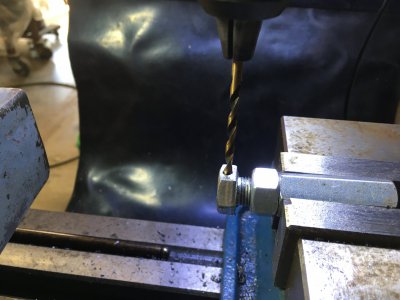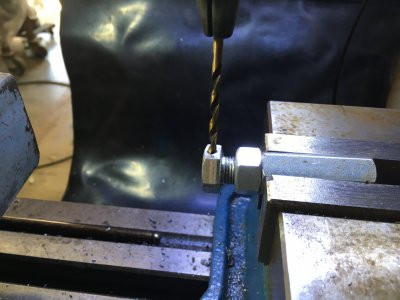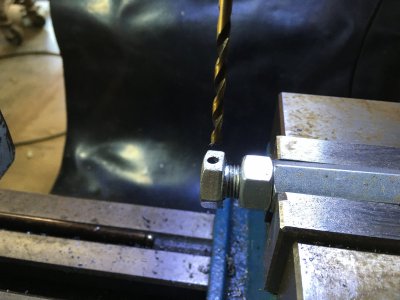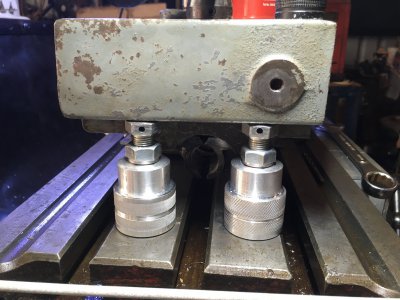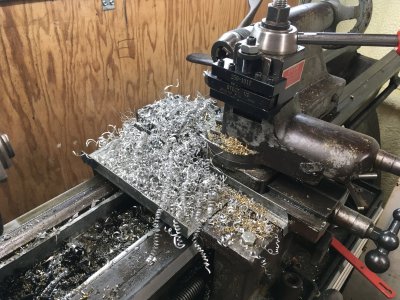- Joined
- Aug 29, 2019
- Messages
- 1,146
I'm Gona be doing some boring on the apron of my Clausing 5913 but before I start the job, I am making some Jacks to help me level it out as close to zero as possible. The hole appears simple, but it supports the hand wheel which also must mesh with other gears inside the apron. We all should know what happens to gears that do not mesh as they should. I will bore the casting and also make a bass bushing so it can be replaced next time instead of wearing the casting out. Beats me why Clausing did not do this when it was built new. It seems to be a very high wear spot on most lathes. The shaft has already been welded up and re-machined the O/D. I added some holes in the bolt heads so I can insert a pin or Allen wrench to hold them while screwing the nut. The welding rod is just to show the hole diameter. I'm really in love with this Bridgeport Clone mill. It is so much quieter and smoother than the gear head PM 833 T bench mill. As I use it, I continue to make improvements that make it easier to use. I've even included the mess I made. Just a couple of side notes, I tried using a 2-flute center cut 1/2" Brubaker end mill to bore the holes in the aluminum. First drilling a 29/64" hole. End mill was brand new, and I got it from McMaster Carr. I finally gave up on it and used An Accurite end mill that I bought in a set from Amazon, and it went thru the aluminum like Ex lax thru a diarrhea ward. Just goes to show sometimes better stuff made in Canada. Note #2 is the knurling tool that came with my Quick-change tool post is total junk. I'll just leave it at that. No sense in letting my potty mouth make a fool out of me.

